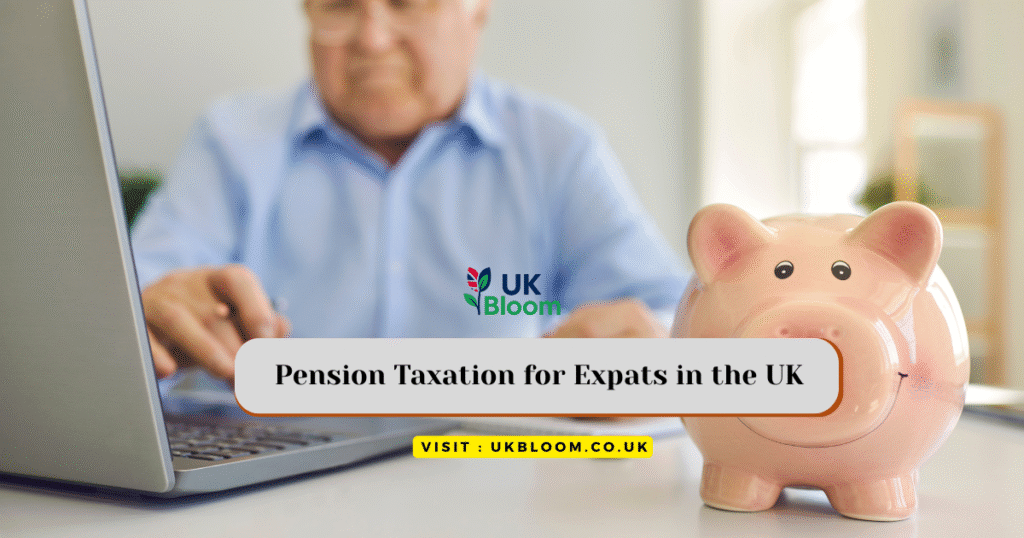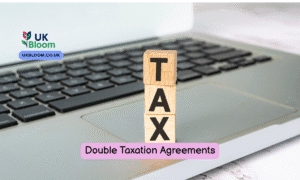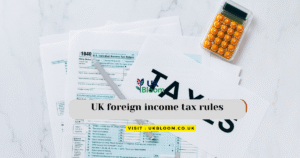Determining how Pension Taxation for Expats in the UK is vital for expats navigating retirement planning, cross-border moves, and income management. This guide details the intricacies of pension taxation—including state, private, and overseas pensions—plus the effects of double taxation treaties, QROPS, TEP, and strategic tax reliefs.
Disclaimer: This article is for informational purposes only. Always consult the UK Home Office or a qualified tax adviser for personalized advice.
Table of Contents
Pension Taxation for Expats in the UK
Eligible expats receive the UK State Pension, which is considered taxable income in the UK. If you’re UK tax-resident:
- Full pension counts towards taxable income.
- Tax is collected via PAYE or Self Assessment.
- Standard Personal Allowance (£12,570 in 2025/26) applies.
- Tax rates scale: 20% (basic) → 40% (higher) → 45% (additional).
If you live abroad but remain UK tax-resident, your State Pension is still UK-taxable. Non-residents pay no UK tax but may owe tax in the country of residence depending on bilateral Double Taxation Agreement (DTA) terms.
Learn more: UK State Pension Abroad and Tax
Private Pension Income and UK Tax
Private pension income from UK sources (personal, workplace, or annuity):
- Taxed at marginal rates under PAYE.
- 25% of fund is typically withdrawn tax-free at outset; the rest is taxable.
- If taking a regular drawdown, income tax applies on each withdrawal.
- Providers may require a P45/P60 to set the correct tax code.
Example: A private annuity paying £12,000/year results in £3,000 tax-free and £9,000 subject to income tax.
Overseas Pensions & Double Taxation Treaties
Determining Tax Home: Abroad or UK
- UK tax residents declare all worldwide pensions.
- Non-residents may owe tax only on UK-sourced pensions; foreign-sourced pensions may be taxable in the country of residence.
Role of Double Taxation Agreements
DTAs define jurisdiction over pension income:
- Some treat pensions as taxable exclusively in residence country.
- Others allocate taxing rights between countries.
Always consult the relevant DTA; misapplication may cause double taxation or improper claims.
QROPS: Tax Treatment and Pitfalls
Qualifying Recognised Overseas Pension Schemes (QROPS) allow transfers from UK to overseas schemes.
Tax Advantages
- Avoid UK Lifetime Allowance (LTA) charges post-transfer.
- Greater flexibility in withdrawal timing.
Common Risks
- UK Overseas Transfer Charge: 25% tax if QROPS provider isn’t in DTA country with appropriate provision.
- 20% Overseas Transfer Levy: Applies in some jurisdictions as a “departure charge.”
Consider long-term residency, tax treaties, and fees before switching.
10% Lump Sum & Other Tax-Free Withdrawals
The 25% tax-free lump sum on pension pots is a universal feature of UK pension schemes. Key details:
- Max 25% of fund withdrawn tax-free; remainder taxable.
- Lump sum threshold tied to Lifetime Allowance (£1,073,100 in 2025/26).
- Partial withdrawals (e.g., via drawdown) affect the tax-free portion remaining.
Annual Allowance & Lifetime Allowance
Annual Allowance
- Standard cap at £60,000/year total pension contributions.
- Excess contributions penalized with tax charges up to 55%.
Lifetime Allowance (LTA)
- Maximum tax-advantaged fund: £1,073,100.
- Exceeding LTA results in 25% (drawdown) or 55% (lump) tax on excess.
QROPS transfers may exempt you from future LTA liability for transfers out post-April 2025.
Tax Reporting: PAYE, Self Assessment & TEP
Recording UK Pension Income
- UK State and private pensions pay via PAYE; check your P60 or annual summary.
- Higher-rate taxpayers need Self Assessment.
Overseas Pensions & TEP (Remittance Basis)
- UK residents claiming TEP pay tax only on remitted foreign pension and not on unremitted sums.
- Must flag via Self Assessment and prove non-remittance.
Tax Relief Opportunities & Allowances
- Personal Allowance (£12,570) reduces taxable income, including UK pensions.
- Unused allowances from employment/pension can’t offset pension tax.
- Additional relief for Blind Person’s Allowance, Marriage Allowance, and Age-Related Allowances may apply.
Benefits of Non‑Resident Tax Status
Expats who achieve non‑resident status via SRT rules may gain:
- No UK tax on overseas pension income.
- UK-source pensions remain taxable via PAYE.
- Reduces administrative burden under UK Self Assessment.
Managing Pension Transfers Abroad
Transfer Process
- Check if overseas scheme is a QROPS recognised by HMRC.
- Request transfer with pension provider.
- Provider deducts charges and reports to HMRC.
Jurisdiction Impact & Withholding
- Transfers outside DTA-recognised countries may face 25% charge.
- Future withdrawals taxed per local laws.
Review bilateral treaty before transferring.
Common Pitfalls & How to Avoid Them
- Overlooking QROPS overseas transfer charge.
- Misapplying TEP and incurring surprise tax.
- Underestimating PEP on lump sum tax-free proportion.
- Exceeding Annual or Lifetime Allowance.
- Double taxation due to ignorance of DTA clauses.
Seek targeted financial advice via international pension specialists.
Internal Resources on UKBloom
- Capital Gains Tax for Expats: Complete 2025 Guide
- Taxable and Non-Taxable Income in the UK: Complete 2025 Guide
- DWP Updates (5)
- pensions-and-retirement-income-are-taxed-in-the-uk/
© This article is free to use with attribution. Reproduction without crediting UKBloom.co.uk will result in copyright infringement.






